
Kyushu
Kyushu J7W1
Shinden

The Kyushu J7W1 Shinden (Magnificent Lightening) was the only aircraft of a canard configuration to be ordered into quantity production anywhere in the world during the second World War. It was also one of the most unusual types to be built in Japan. The aircraft's unusual design was due to Captain Tsuruno of the technical staff of the Japanese Navy, who from the outset contemplated the possibility of replacing the rear mounted radial engine with a turbojet.
Following initial work on this concept, the First Naval Air Technical Arsenal designed a glider to test the proposed aircraft's handling qualities at low speed. Three prototype gliders, designated MXY6, were built and began trials in the Fall of 1943. Later one of these was fitted with a 22 hp four cylinder air-cooled engine. With the feasibility of the canard design having been proved by the unpowered and powered version of the MXY6, the Navy instructed Kyushu to design an Otsu (B) Type Interceptor Fighter along these lines to meet the requirement of an 18-Shi specification. Kyushu was selected in spite of their lack of previous experience because their design team and production facilities were available. The Navy did assign a team lead by Captain Tsuruno to strengthen Kyushu's design capabilities.
Work on the J7W1 began in earnest in June of 1944 and the first prototype was completed within a mere ten month period. The nose, to which the horizontal stabilizers were attached, was to contain four 30 mm Type 5 cannon and housed the nose wheel. The pilot sat in the middle of the fuselage forward of the aft-mounted swept wings. The main undercarriage legs and wheels retracted laterally into the wings and small auxiliary wheels retracted into the base of the two vertical fins and rudders attached to the wings. The 2,130 hp Mitsubishi MK9D eighteen cylinder radial engine and its supercharger were installed in the fuselage behind the pilots cockpit and drove a six-blade propeller via an extension shaft. Engine cooling air was supplied by long narrow obliquely mounted intakes on either side of the fuselage. The navy, disparately needing a heavily armed high-performance interceptor fighter, decided prior to the aircraft's maiden flight to order it into production at Kyushu's Zasshonokuma factory and at Nakajima's Handa plant. Considering the difficult conditions under which the Japanese aircraft industry was working at the time, the anticipated monthly output of 30 Shindens from Kyushu and 120 from Nakajima appears to have been overly optimistic and the Japanese surrender put an end to them.
Difficulties with engine cooling on the ground and the unavailability of some items of equipment delayed the first flight until August 3, 1945, when Captain Tsuruno took the aircraft for a short flight at Fukuoka Airport. Two other short flights were made bringing the total test time to some 45 minutes prior to the end of the war and revealed the need to correct a strong torque pull to starboard on takeoff and marked vibrations in the propeller and drive shaft. At wars end a second prototype had been completed but not flown and it was eventually dismantled and shipped to the United States. This aircraft is currently stored and the National Air and Space Museum in Washington, D.C. awaiting eventual restoration. Plans were also made for a J7W2 version in which the radial engine was to be replaced with a 900 kg thrust Ne-130 turbojet.
The Kit
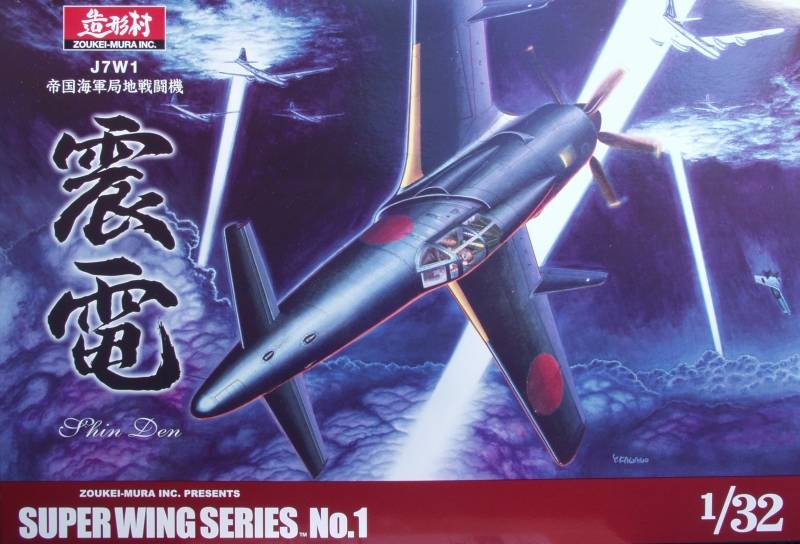
This is the first kit released by the new kids on the aircraft modeling block, ZouKei-Mura. While they are not new to the hobby business they are new to model aircraft. It must be noted that ZouKei-Mura has a different approach to model making, they want constructing their kits to be a learning experience and as such want to depict as much of the internal structure and workings as possible. This makes them a gold mine for those who like to do dioramas and aircraft all opened up like they are under going repairs or maintenance. Unfortunately it just adds complications for those that like them all buttoned up and creates lots of places for fit problems. The kit was released near the end of 2009 and as I yet I have seen very few built. Being that it is their first aircraft kit one can expect there may be some issues.
With that lets take a look at the kit. It comes in a very large box considering the size of the aircraft. It is the top opening variety and has rather dramatic artwork showing a Shinden diving away from a B-29 at night. The box is sturdy with the bottom half being made of heavy cardboard. Inside the box there is quite a stack of plastic. Six large bags and one small bag with plastic sprues inside. Two of the bags each have two sprues of plastic molded in a light cream color. These contain mostly the airframe parts. The surface detail consists of recessed panel lines and rivets as well a few raised rivets and other details and applicable. While most of the molding is crisp some of the raised detail seems a little soft. The surface is smooth but not glossy and I found no surface defects on any of the airframe parts and flash is practically nonexistent. The control surfaces on the wings are separate including the flaps but all others are molded in the neutral position. I looked hard for ejector pin marks that will show, the only one that comes close is on the gear doors and it will be hidden by the wheel.
Next are two bags containing parts molded in a metallic color, not quite silver, more of a steel color. Two sprues in one bag and one very large sprue in the other. The two smaller sprues are engine parts. While nice some of the detail seems a bit soft and not as sharp as the cream color parts. I have also read comments from modelers who have had issues gluing these parts. The parts are for the most part flash free and since they are engine parts unless you plan on displaying the engine opened up most will never be seen, which is a shame because it is very well detailed with the induction piping, exhausts, super chargers, everything but the wiring. The large sprue contains mostly interior parts which includes a floor structure and wing spar casting that is quite complex. While exhibiting little in the way of flash again the detail just doesn't seen as sharp and crisp as would be expected on an expensive state of the art kit. There are two seats supplied, one with and one without seat belts. The interior is well appointed and needs little else to look complete and most will be happy with it, I'm hoping the softness of molding won't be that noticeable after painting.
The last big bag has one sprue of parts molded in black plastic which consists of the large six bladed prop, molded thankfully in one piece, wheels and landing gear parts, cannons, cylinder heads for the engine and various other parts. The tires are not weighted and there is a bit more of a mold parting seam on the parts that I again would expert on a state of the art kit. The cannons are well detailed but again unless opened up all you are going to see is the end of the barrel. The sprues are shown below. Please note the one large steel color sprue I split in half for photography purposes so things would be more visible.
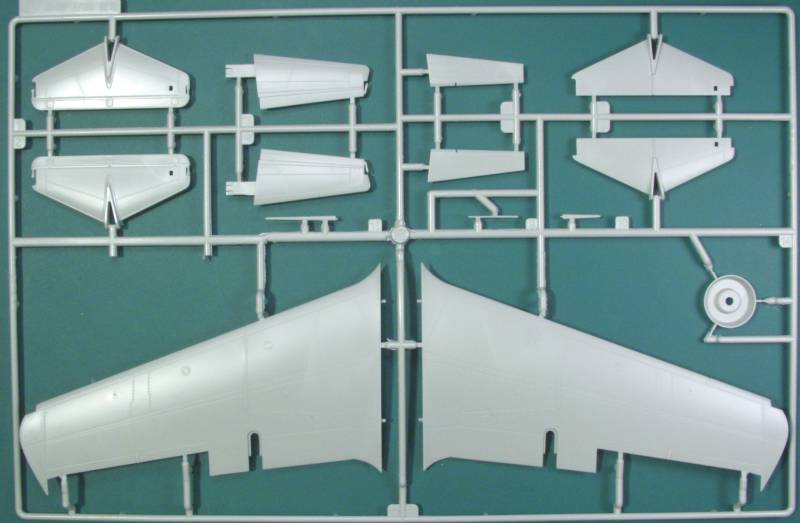
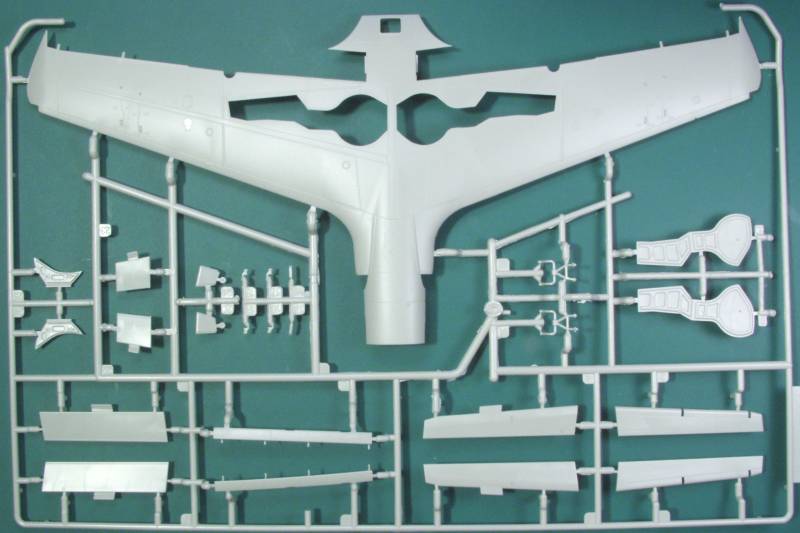
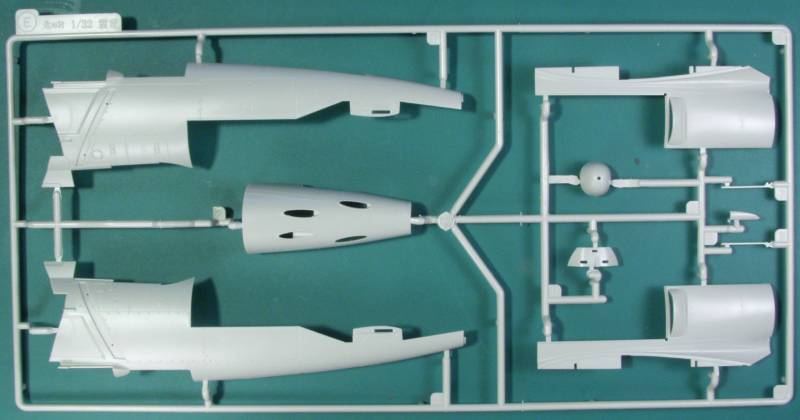
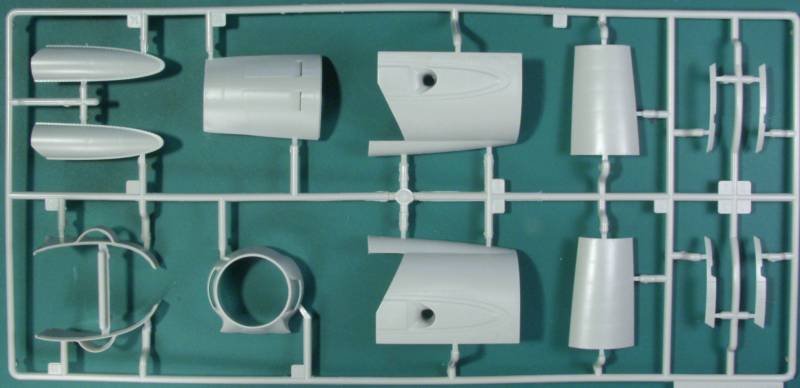
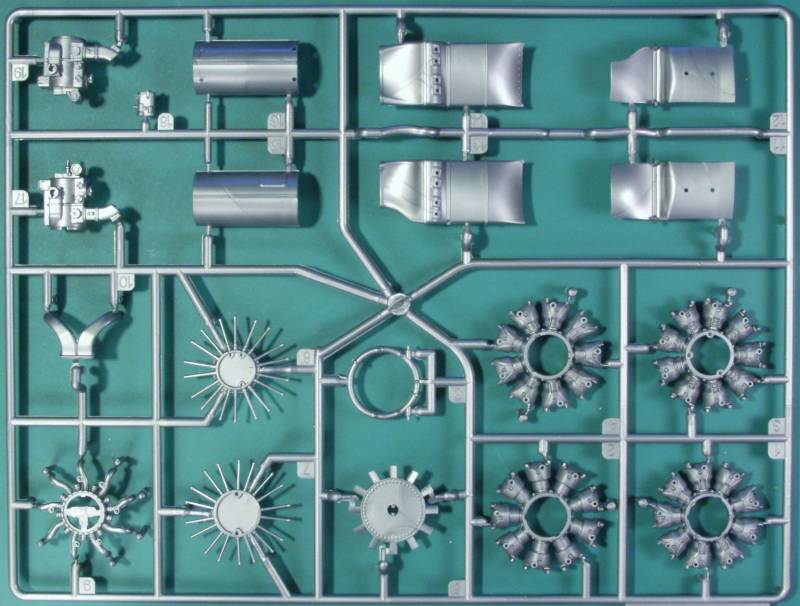

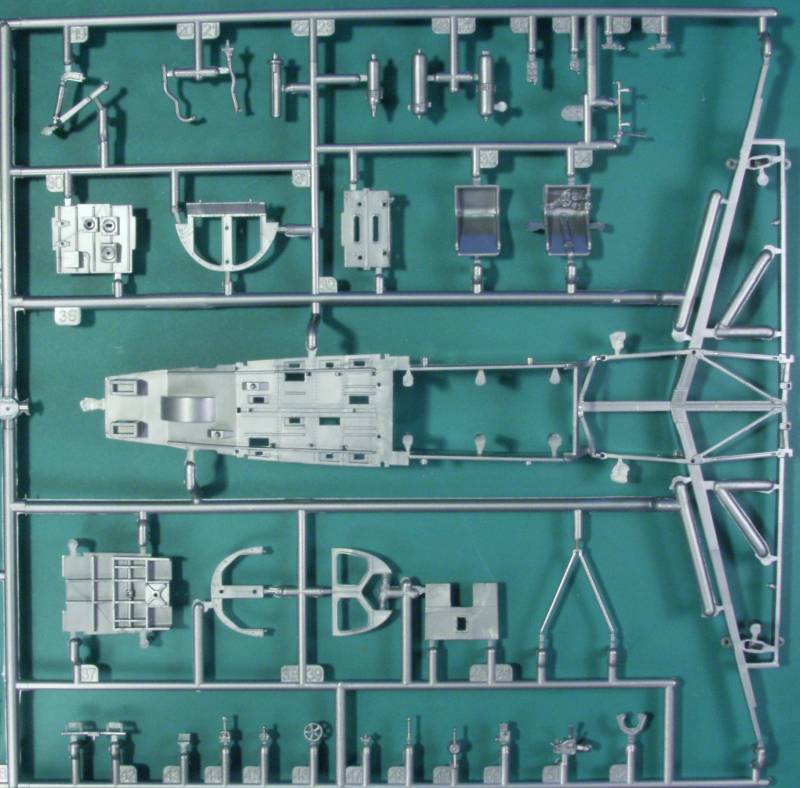
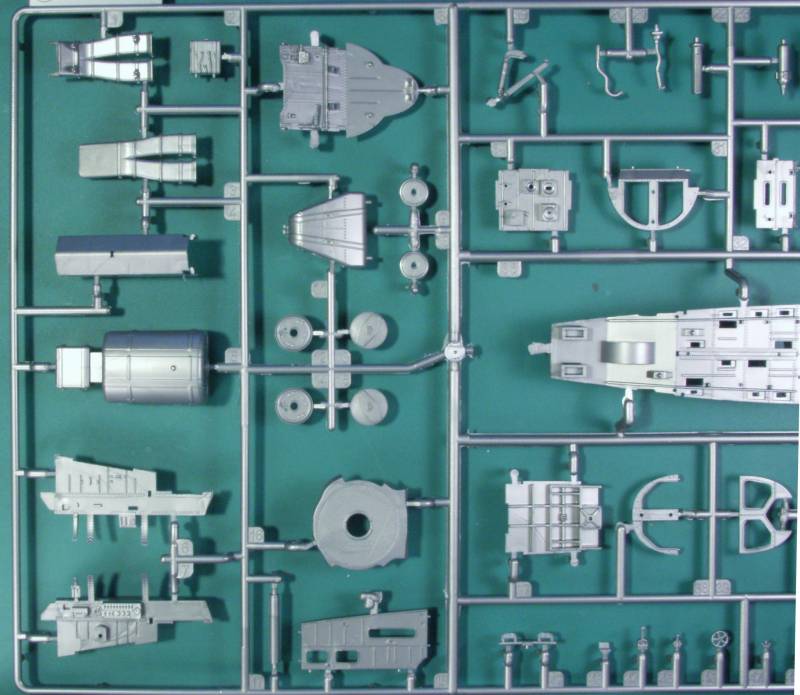
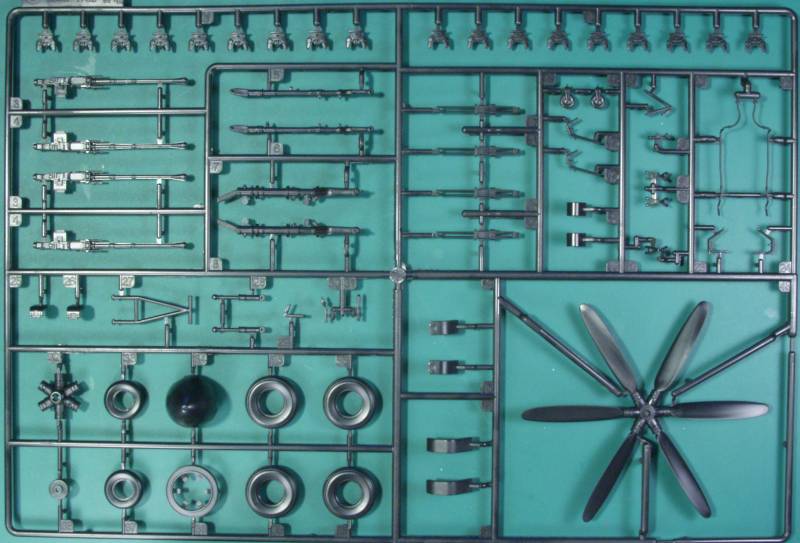
The clear parts were also in their own bag, the parts are thin and clear with a little distortion in the curved top portion. The canopy parts are supplied for both open and closed configuration. Also included is the instrument panel. I guess they expect you to mask the dials and paint the rest. There is also the gun sight and reflector plate, the armored glass for the windscreen and some navigation light lenses. See below.
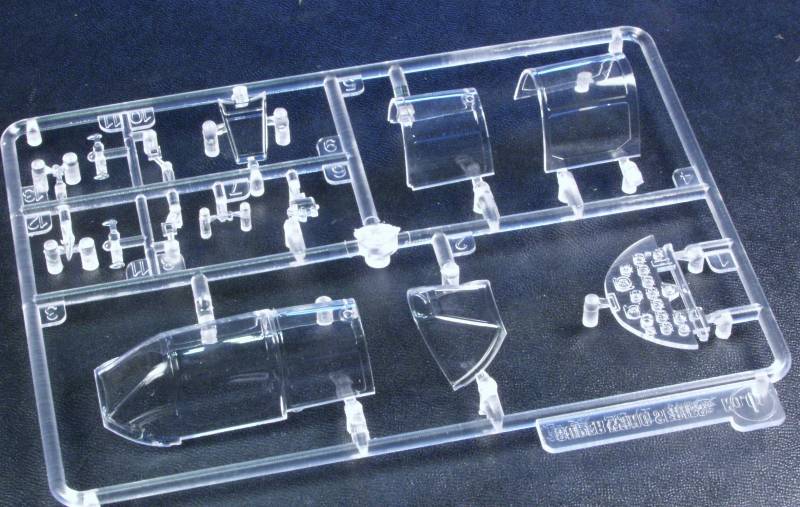
The decals were actually double bagged and placed in the bottom of the box under the instructions to keep them safe. Markings are limited as only two were built and none saw service. There is a decal for the instrument panel but I'm not sure how they expected you to use it, I did not see it mentioned in the instructions. The decals look reasonably thin and have minimal excess film. Other than the national markings most of the rest are stencils and wing walk markings. Items 3 and 4 are the stripes for the propeller blades. There was also a small bag in with the decals containing vinyl masks for the canopy and a piece of brass wire about an inch and a half long. I haven't checked yet to see where that goes. See below.
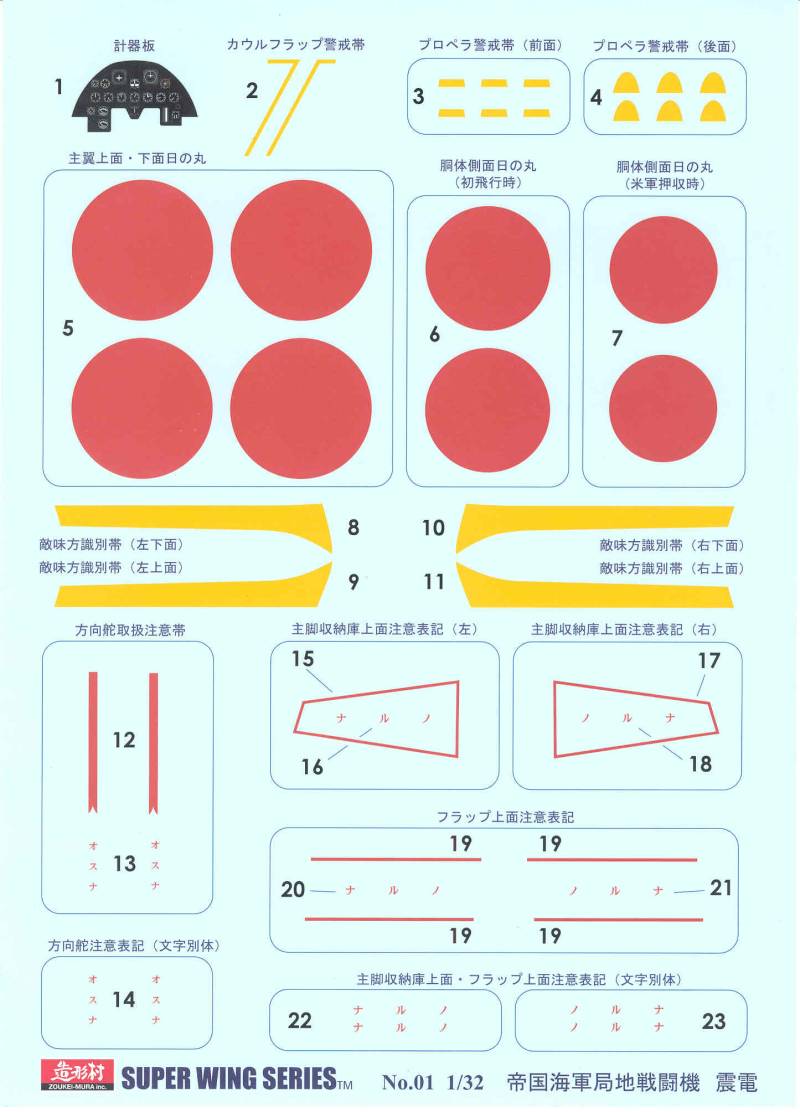
The instructions are quite something coming very close to those provided in Wingnut Wings kits. The instructions are bound in booklet form, 38 pages long not including the front and back covers and is made to resemble a technical manual for the actual aircraft. The book itself is all in Japanese with only a few subtitles in English. The assembly diagrams are all photo realistic or cad diagrams and there are the usual icons for gluing and cutting so assembly should be straight forward. After several pages of information, icon chart and paint chart assembly begins on page 6. The engine alone takes 4 very busy pages with the next page containing photographs of the completed assembly from several angles. The next 2 pages assemble the cockpit again followed by a page with color photos of the assembly. Next comes the forward fuselage on the next 4 pages again followed by a page of color photos showing progress to this point. Then 4 more pages assembling the wings and rear fuselage and yet another page of color photos of the assembly to that point. The next two pages cover installing the fuselage covers and more photos, then two pages of undercarriage work and more photos. The final 4 pages adds the balance of the parts and is followed by two pages of color photos of the completed model and 2 more color pages showing all the decal call outs. The last 2 pages are parts maps. Quite an exhaustive set of instructions but they should leave no doubt how everything goes together. I can't really find any complaints here. Shown below it the cover to the instruction manual.
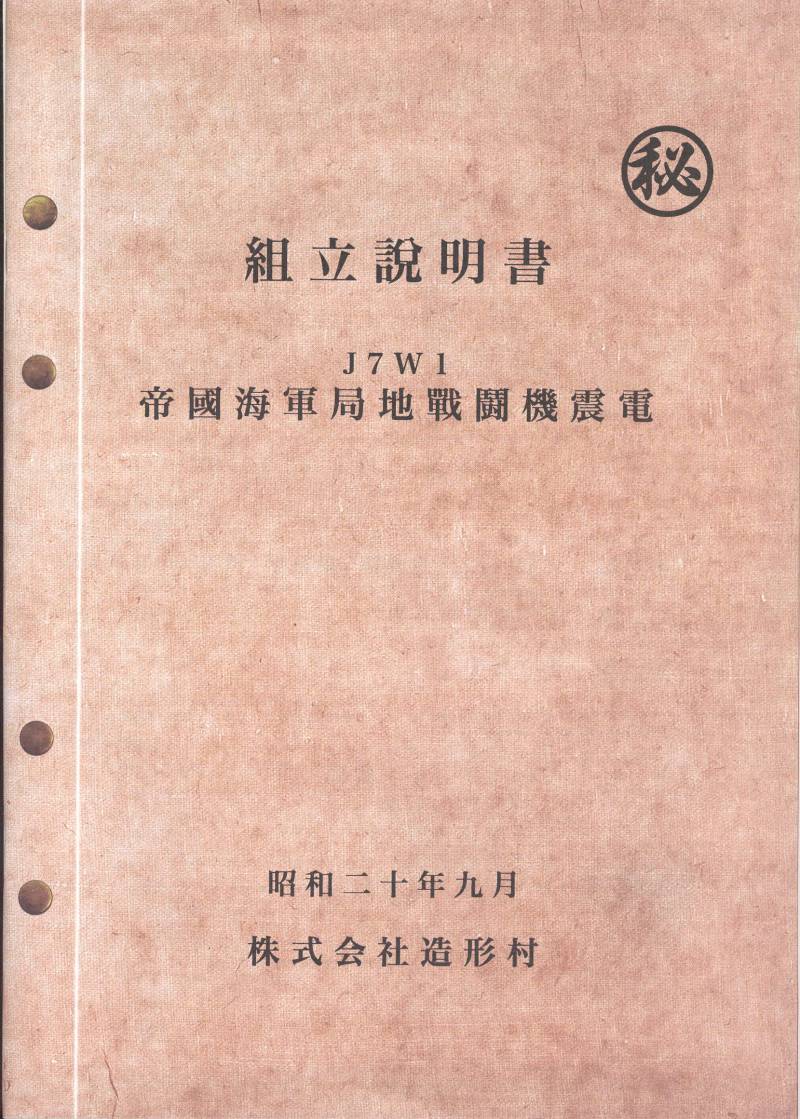
After Market Goodies
I'm not going to list anything here as over time there have been a number of items available. ZouKei-Mura has taken a different path in this area in that after market items are available only through them. The photo etch for instance is made by Eduard but only sold through ZouKei-Mura. Not all the items are add ons for the aircraft as some are pilots and ground crew. ZouKei-Mura's experience in the past was primarily doll making and it's a natural for them to create interesting figures to go with their models. If you might be interested in any of these items check out there website here. Sprue Brothers also carries a good stock of their accessories.
Conclusions
Well I may have sounded a bit more critical of this kit, anytime a new state of the art kit appears the expectation level is usually pretty high. I think for their first effort they did very well. Not perfect but few rarely are. Since this kit they have released several other kits, the second one was a Focke-wulf Ta 152 which I will also be reviewing and from what I have read each one has gotten a bit better, which means they are listening to consumer feedback and making changes. I do believe their latest kits no longer use the multicolor plastic which I think would be an improvement. This is quite a complex kit and I do expect there to be some fit issues and for the reason would only recommend this kit to more experienced modelers.
Links to kit build or reviews
Another in box review can be found here.
References
Japanese Aircraft of the Pacific War by R.J. Francillion
Back to the 1/32 Scale Japanese Aircraft Page
Updated 7/7/13